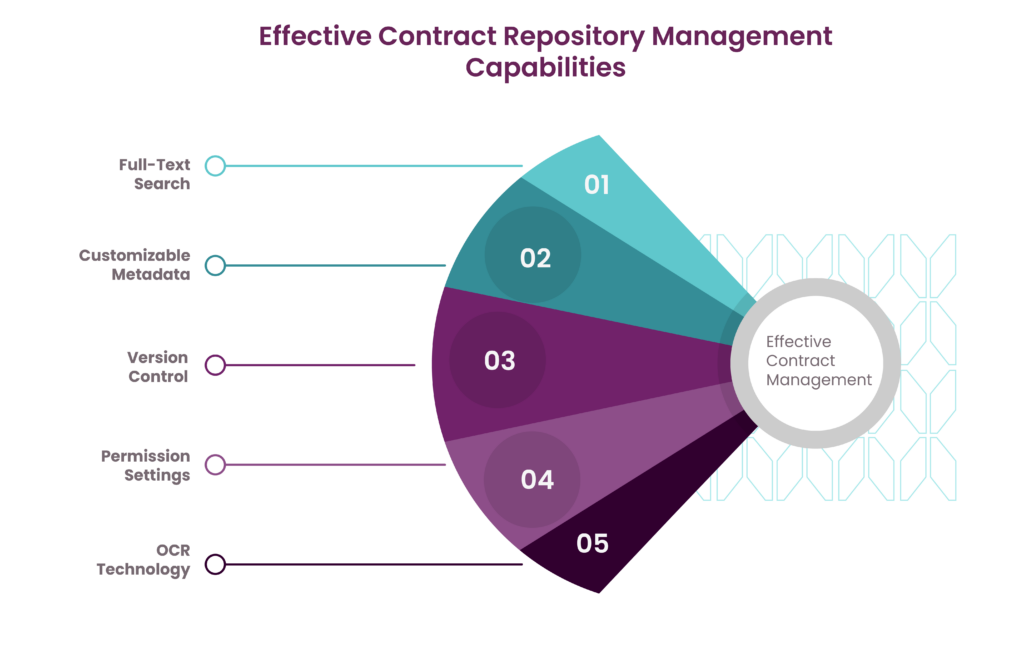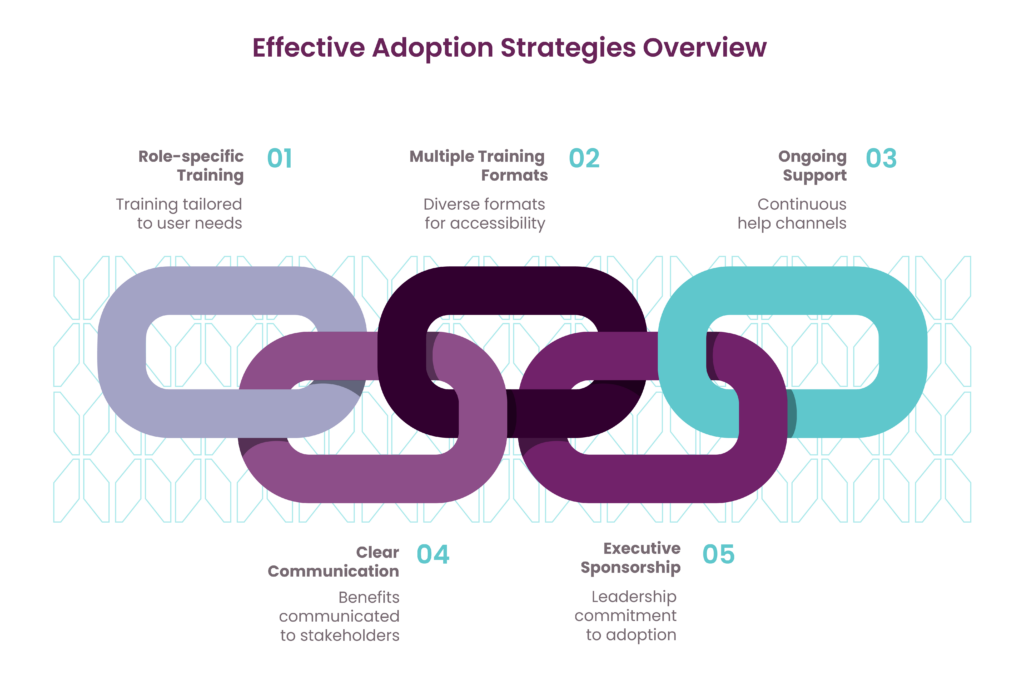When to Consider a CLM Switch? What Features Do You Need for CLM Success?
You know that feeling when you’re halfway through a bad streaming show, and you think, “I’ve already spent this much time on it— might as well finish”? That’s exactly how many organizations treat their software – and Contract Lifecycle Management (CLM) systems are no exception. They’ve invested time, money, and effort, so they convince themselves the system isn’t that bad.
But is it working for you? Inefficient CLM systems leak money faster than you might realize. Every delayed contract, every manual workaround, and every missed renewal adds up. Yet, switching CLMs can feel terrifying:
- What if it doesn’t work?
- What if your team refuses to adopt it?
- What if you’re left explaining to leadership why you just spent six figures on something nobody uses?
These concerns are valid, but staying with the wrong system often costs more in the long run. This article will help you identify when it’s time to consider a CLM switch and what features are essential for success in your industry. Whether you’re a contract manager struggling with an outdated system or a leader exploring CLM solutions for the first time, you’ll find practical guidance to make informed decisions.
You’ve got questions. We’ve got answers. Maybe you inherited a mess. Maybe your ‘CLM’ is just a shared drive and crossed fingers. Or maybe your team is drowning in manual work and broken promises. If that sounds familiar, this guide is for you.
Common Drivers for CLM Transformation
Organizations rarely switch CLM systems on a whim. The decision typically aligns with broader business initiatives and evolving needs. Understanding these common drivers can help you contextualize your own CLM challenges and build a more compelling case for change.
Many legacy systems weren’t built with technology-first origins, resulting in platforms that struggle to meet today’s digital demands. The post-pandemic landscape has also revealed the limitations of hastily implemented solutions that now require more robust replacements.
Key organizational drivers for CLM transformation often include:
- AI transformation initiatives: Organizations pursuing AI strategies find that outdated systems cannot leverage AI for contract analysis and risk identification, leaving significant efficiency opportunities untapped.
- Technology modernization programs: As companies update their tech portfolio, dated CLM platforms that can’t support mobile accessibility or multi-device experiences become evident liabilities.
- Enterprise-wide standardization: C-suite initiatives to consolidate technology often reveal redundant systems across departments, with legal, procurement, and sales teams using different tools for the same contract-related tasks.
- Global operation challenges: International expansion exposes the limitations of systems designed primarily for single-region operations, particularly regarding language support and region-specific compliance.
- Post-pandemic cleanup: Many organizations implemented stopgap solutions during COVID disruptions that operated outside their security firewall, creating compliance and integration issues that now require resolution.
These transformation drivers often provide the necessary momentum to overcome organizational inertia and secure buy-in for a CLM switch. They help frame CLM not merely as a legal tool but as a strategic business asset that supports broader organizational objectives.
Signs Your Current Contract Management System Is Holding You Back
A CLM that once met your needs may no longer serve your growing organization. Here are telltale signs it’s time to reconsider your current solution:
Poor User Adoption Across Legal and Business Teams
When teams actively avoid using your CLM system, that’s a significant red flag. If your legal department is creating workarounds or your sales team is emailing contracts directly rather than using the platform, your CLM isn’t solving problems—it’s rather creating them.
Poor adoption undermines the entire purpose of having a CLM. When contracts exist outside your system, you lose visibility, control, and the ability to track critical information. The best systems balance power with simplicity, ensuring that both legal and business users can accomplish their tasks without unnecessary complexity.
One common pitfall that leads to adoption failure is trying to do too much at once. Many organizations attempt to “boil the ocean” with their CLM implementation, overwhelming users with complex functionality before establishing basic processes. A more effective approach is to start small, establish success, and then iterate. Look for a solution you can grow into, not just one that solves today’s problems.
This is especially important when considering AI capabilities. Rather than bolting on separate AI point solutions that claim to solve contract review in isolation, seek platforms with embedded AI that integrates seamlessly with your core contract processes and can evolve with your needs.
Contract Data Extraction Limitations Impacting Analysis
If extracting meaningful data from your contracts feels like mining for gold with a plastic spoon, your current CLM may be falling short. Advanced contract data extraction capabilities should allow you to automatically identify key terms, obligations, and opportunities within your agreements.
Without extraction features, your team spends hours manually reviewing documents to find basic information. This creates a bottleneck that prevents your organization from gaining valuable insights from contract analysis. When your team constantly struggles to answer seemingly simple questions about your contract portfolio—like how many agreements contain specific clauses or when certain renewals are approaching—it’s a clear indication that your current system lacks adequate data extraction capabilities.
The ability to quickly extract and analyze contract data impacts everything from compliance to business strategy. If your current system can’t efficiently pull information like renewal dates, price increase provisions, or compliance requirements, you’re missing opportunities to leverage your contract portfolio as a strategic asset.
Workflow Bottlenecks in Your Contract Management Workflow
Do contracts move through your organization like molasses? If your approval process involves multiple emails, manual reminders, and constant status checks, your contract management workflow needs improvement.
Efficient CLMs create clear paths for contracts to move from creation to signature with minimal friction. When contracts routinely get stuck in the review or approval stages, that’s not just frustrating—it’s costing you money and potentially damaging business relationships.
Watch for these warning signs of workflow bottlenecks:
- Contracts that take multiple weeks to move through simple approvals (instead of days or even hours)
- Team members who don’t know the status of their contracts
- Regular complaints about delays from internal stakeholders
- Missed business opportunities due to contract delays
- Manual workarounds to bypass system limitations
These workflow bottlenecks often indicate that your CLM lacks the automation and visibility features needed to keep contracts moving efficiently.
Critical Features for Contract Specialist and Manager Success
Contract specialists and managers need specific tools to excel in their roles. Here are the essential features that enable efficiency and effectiveness.
Advanced Contract Repository Management for Centralized Control
A robust contract repository forms the backbone of effective contract management. This centralized database should house all your agreements in a searchable, accessible format that makes finding specific documents or clauses simple.

Essential contract repository management capabilities include:
- Full-text search across all documents, including scanned PDFs
- Customizable metadata fields for filtering and organization
- Version control to track document history and changes
- Permission settings to control document access
- OCR technology for scanned document searchability
When evaluating CLM solutions, pay special attention to how they organize and retrieve contracts. This seemingly basic functionality has profound implications for every other aspect of contract management. The best repositories make finding information intuitive for all users, not just power users with specialized knowledge.
Intelligent Contract Tracking and Obligation Management
Missed deadlines and forgotten obligations can transform valuable contracts into costly liabilities. Comprehensive obligation management features track commitments, deadlines, and requirements automatically.
Your CLM should provide automated alerts for approaching deadlines and milestones, along with clear visibility into upcoming renewals and termination rights. The ability to assign responsibility for specific obligations ensures accountability while tracking performance against contractual requirements helps prevent compliance issues. Contract renewal reminder software functionalities that alerts appropriate stakeholders completes the obligation management picture.
These capabilities ensure nothing falls through the cracks, protecting your organization from compliance issues, missed renewal opportunities, and potential breach of contract scenarios. The right obligation management features turn passive contract storage into active contract management, delivering tangible business value.
Customizable Contract Business Intelligence Reporting
Data without analysis is just noise. Your CLM should transform contract information into actionable business intelligence through customizable reporting capabilities.
Effective contract business intelligence tools allow you to track key performance metrics across your contract portfolio and identify patterns in contract negotiations and outcomes. You should be able to analyze contract value and risk across departments or regions while generating compliance reports for regulatory requirements. The ability to monitor cycle times helps identify process improvement opportunities and optimize your contract management workflow.
This reporting capability turns your contracts from static documents into strategic assets, providing insights that drive business decisions and improve overall contract performance. When contract specialists can quickly generate meaningful reports without IT support, they become more valuable strategic partners to the business.
Industry-Specific CLM Requirements to Consider
CLM Pharma: Regulatory Compliance and IP Protection
The pharmaceutical and life sciences industry deals with complex regulatory requirements, intellectual property concerns, and strict compliance standards. A CLM solution for pharma must address these specialized needs.
Essential features for applications include regulatory tracking and compliance monitoring capabilities that align with industry-specific requirements. IP protection clauses and patent expiration tracking become critical when managing pharmaceutical contracts, as intellectual property often represents the company’s most valuable assets. The ability to manage complex research and development agreements, including milestone-based payments and performance criteria, adds another layer of complexity to pharmaceutical contract management.
Integration with quality management systems ensures contractual obligations align with internal quality processes, while comprehensive audit trails support regulatory submissions and inspections. Pharmaceutical and life sciences companies need CLM solutions that can handle these complex requirements while maintaining compliance with regulations like HIPAA, GxP, and international standards.
Manufacturing Contract Management and Supply Chain Integration
Manufacturing companies juggle complex supplier relationships, production agreements, and distribution contracts. Their CLM needs to focus on supply chain efficiency and vendor management.
Key considerations for manufacturing contract management include integration with supply chain management systems to create visibility across the entire supply chain ecosystem. The ability to track vendor performance against contract terms helps ensure suppliers meet their obligations for quality, delivery, and pricing. Management of complex pricing structures and volume discounts becomes particularly important when dealing with raw materials and component suppliers whose prices may fluctuate based on market conditions or purchase volume.
Support for international trade compliance helps manufacturing companies manage the complexity of global supply chains, while the ability to handle technical specifications and quality requirements ensures that contracts accurately reflect production needs. Manufacturing organizations benefit from CLM solutions that connect contract terms directly to operational performance, creating visibility across the supply chain.
Retail Contract Management: Scaling with Seasonal Demands
Retail businesses face fluctuating contract volumes, seasonal agreements, and diverse supplier relationships. Their CLM needs emphasize flexibility and scalability.
Retail contract management priorities include high-volume management of vendor agreements spanning everything from merchandise suppliers to maintenance services. Seasonal contract templates and renewal cycles align with retail business patterns, ensuring appropriate timing for holiday merchandise, special promotions, and seasonal staffing. Promotion and marketing agreement management capabilities help retail businesses track co-marketing opportunities and vendor allowances.
Lease administration features support retailers with multiple locations, while integration with inventory and merchandising systems connects contract terms to operational execution. Retail organizations need solutions that can handle high contract volumes while adapting to seasonal business cycles and changing market conditions.
Technical Evaluation Criteria for Enterprise Contract Lifecycle Management Software
Beyond industry-specific features, these technical aspects are crucial for enterprise contract lifecycle management software:
Integration Capabilities with CRM and ERP Systems
No CLM exists in isolation. Your contract management system must connect seamlessly with other business-critical platforms like CRM, ERP, procurement, and finance systems.
Evaluate potential CLM solutions based on their pre-built integrations with common business systems and API availability for custom integrations. Data synchronization capabilities between systems ensure information flows automatically, eliminating duplicate data entry and inconsistencies. Authentication options like single sign-on improve the user experience while maintaining security, and workflow triggers that pass information between systems create automated processes that span multiple platforms.
The most forward-thinking CLM solutions offer robust APIs and no-code integration capabilities that connect seamlessly with existing enterprise systems like ServiceNow, Ariba, and other P2P platforms. This integration eliminates the data silos that plague many organizations and enables true enterprise-wide contract visibility.
Automation Features for Standard Documents (NDA, SOW)
Significant efficiency gains come from automating routine documents. Your CLM should excel at generating standard agreements like NDAs, SOWs, and other frequently used templates.
Look for features like template libraries for common document types and clause libraries with approved legal language. Dynamic document assembly based on business rules allows for customization without legal review for standard scenarios. Self-service options for business users reduce the legal department workload, while appropriate approval workflows ensure proper oversight based on risk levels.
A well-designed clause library becomes particularly valuable when managing standard documents. It allows legal teams to create pre-approved language options that business users can select based on specific criteria, ensuring compliance while enabling speed.
SaaS Contract Management Security and Accessibility
The shift to cloud-based SaaS contract management solutions offers convenience but raises important security considerations. Your CLM must balance accessibility with robust protection.
Critical security and accessibility factors for SaaS contract management include:
- Role-based access controls that limit users to appropriate documents
- Data encryption both in transit and at rest
- Compliance with industry standards like SOC 2 and GDPR
- Comprehensive audit trails for all system activities
- Disaster recovery and business continuity provisions
With contracts containing sensitive business information, security cannot be an afterthought in your CLM selection process. Evaluate potential vendors not just on their current security practices but on their ongoing commitment to security improvements as threats evolve.
Implementation Strategies for a Successful CLM Switch
Even the best CLM solution will fail without proper implementation. Here’s how to ensure a smooth transition:
Data Migration Planning for Your Contract Repository
Moving your existing contracts to a new system requires careful planning and execution. Successful data migration strategies balance completeness with practicality.
Bad data is worse than no data! Focus on the quality rather than the quantity of migrated contracts. Start by identifying which contracts truly need to be in the new system immediately—typically active, high-value agreements with ongoing obligations.
Consider a phased approach that begins with current, business-critical contracts before addressing historical documents. Use AI-powered extraction to capture key metadata while manually verifying critical information like dates and parties. Establish processes for ongoing data quality maintenance and create standards for new contracts entering the system.
A thoughtful migration strategy ensures your new CLM starts with clean, accurate data that users can trust. Remember that contract migration is not a one-time event but an ongoing process that continues as contracts are renewed, amended, or created.
User Training and Adoption Strategies
Even the most powerful CLM is worthless if no one uses it. Effective training and adoption strategies must address both technical skills and organizational change management.

Proven adoption strategies include:
- Role-specific training tailored to different user needs
- Multiple training formats (video, written, live sessions)
- Office hours or help channels for ongoing support
- Clear communication about benefits for each stakeholder group
- Executive sponsorship and organizational commitment
Adoption is a multi-step journey instead of a quick event: Plan for ongoing support as users integrate the new system into their daily work. The most successful implementations treat change management with the same importance as technical configuration.
Measuring ROI from Your Contract Renewal and Management Investment
Demonstrating the value of your CLM investment requires clear metrics and tracking:
Key Performance Indicators for Contract Analysis Success
Establish measurable KPIs to track improvements from your new CLM implementation.
Key performance indicators to consider include:
- Reduction in contract cycle time from request to signature
- Decrease in legal review time for standard agreements
- Increase in contract compliance rates
- Reduction in expired or auto-renewed contracts
- Cost savings from improved contract terms
Collecting baseline metrics before implementation allows you to demonstrate concrete improvements afterward. The most convincing ROI calculations combine hard financial metrics with qualitative benefits like improved compliance and reduced risk.
Long-Term Value of Contract Reminder Software Functionalities and Proactive Management
Beyond immediate efficiency gains, proactive contract management delivers ongoing financial benefits that compound over time. Contract reminder software functionalities ensure you capture renewal opportunities before they expire and exercise price increase rights at appropriate intervals.
Avoiding auto-renewals of unfavorable agreements prevents unnecessary costs, while preventing penalties from missed compliance obligations reduces risk exposure. Many organizations find they can reduce outside counsel costs through improved self-service capabilities for routine matters.
The ability to identify and leverage volume discounts across business units creates purchasing power while standardizing terms reduces risk exposure and negotiation time. These features translate directly to bottom-line results when properly implemented and maintained.
For enterprises handling tens of thousands of contracts annually across global operations, the resource consumption of manual tracking becomes unsustainable. Modern CLM solutions allow these resources to be redirected to higher-value activities that drive revenue and strategic advantage rather than administration.
Conclusion
Deciding whether to switch your CLM isn’t easy, but staying with an inadequate system can be more costly in the long run. By evaluating your current solution against the features we’ve discussed—from contract repository management to industry-specific functionality—you can make an informed decision about whether it’s time for a change.
Remember that successful CLM implementation isn’t just about the technology. It requires thoughtful process design, clean data migration, comprehensive training, and ongoing measurement of results. When these elements come together, your contract management system becomes more than just a document repository—it becomes a strategic asset that drives business value.
If you’re seeing the warning signs we’ve described—poor adoption, data limitations, workflow bottlenecks—it may be time to reevaluate your approach to contract lifecycle management. The right solution for your organization should address your specific industry needs while providing the technical capabilities required for efficiency, compliance, and intelligence.
With Malbek, the journey begins with a structured implementation plan tailored to your specific needs. Unlike the “big bang” approach that often leads to failure, Malbek’s methodology focuses on quick wins first—addressing your most pressing pain points while building a foundation for future growth.
For organizations that have previously experienced unsuccessful implementations, Malbek’s approach is particularly valuable. The phased rollout ensures you see value early and often. Expert teams guide you through process mapping, data migration, and configuration. When users experience immediate benefits, adoption follows naturally—transforming skeptics into advocates.
The question isn’t whether you can afford to switch CLMs. It might be whether you can afford not to.
Discover how Malbek’s AI-powered CLM solution can transform your contract processes with intuitive design, powerful automation, and industry-specific capabilities. Request a demo today to see how Malbek addresses the challenges we’ve discussed and delivers measurable ROI from day one.






